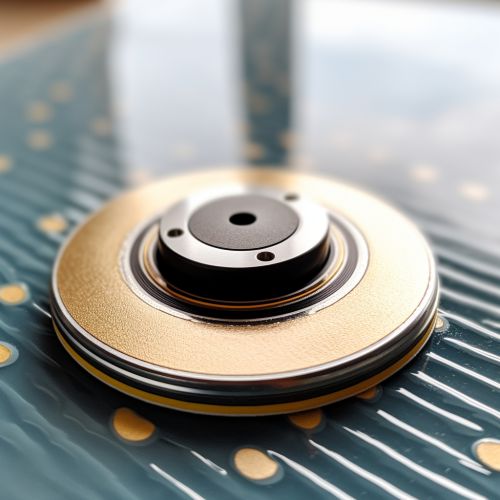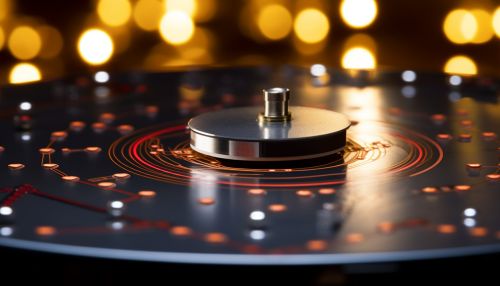Piezoelectric sensor
Introduction
A piezoelectric sensor is a device that uses the piezoelectric effect to measure changes in pressure, acceleration, temperature, strain, or force by converting them to an electrical charge. The prefix piezo- is Greek for 'press' or 'squeeze'.
Principle of Operation
Piezoelectric sensors operate on the principle of piezoelectric effect. This effect is a property of certain classes of materials that have the ability to generate an electric charge in response to applied mechanical stress. The word piezoelectricity means electricity resulting from pressure and latent heat.


Types of Piezoelectric Sensors
There are several types of piezoelectric sensors, each designed for specific applications. These include:
- Piezoelectric accelerometers: These sensors measure the rate of change of velocity with respect to time (acceleration). They are commonly used in mobile devices, automotive systems, and in the monitoring of vibrations in machines.
- Piezoelectric pressure sensors: These sensors measure the force exerted on a surface per unit area (pressure). They are used in a variety of applications, including industrial process control, weather monitoring, and in medical devices.
- Piezoelectric temperature sensors: These sensors measure changes in temperature. They are often used in environmental monitoring systems and in industrial process control.
- Piezoelectric strain sensors: These sensors measure the deformation of a material (strain). They are used in structural health monitoring, in the testing of materials, and in the monitoring of civil infrastructure.
Construction and Materials
Piezoelectric sensors are typically constructed using piezoelectric ceramics or crystals. These materials have a crystalline structure that allows them to generate an electric charge when subjected to mechanical stress.
The most commonly used piezoelectric materials are:
- Quartz: Quartz is a naturally occurring mineral that exhibits strong piezoelectric properties. It is often used in high-precision applications due to its excellent temperature stability and high frequency response.
- Lead zirconate titanate (PZT): PZT is a synthetic ceramic material that exhibits strong piezoelectric properties. It is commonly used in sensors due to its high sensitivity and wide frequency range.
- Polyvinylidene fluoride (PVDF): PVDF is a polymer material that exhibits piezoelectric properties. It is often used in flexible and lightweight sensors.
Applications
Piezoelectric sensors have a wide range of applications in various fields. These include:
- Industrial process control: Piezoelectric sensors are used to monitor parameters such as pressure, temperature, and vibration in industrial processes.
- Automotive systems: In automotive systems, piezoelectric sensors are used to monitor engine vibrations, tire pressure, and other parameters.
- Medical devices: Piezoelectric sensors are used in various medical devices to monitor parameters such as blood pressure, heart rate, and respiratory rate.
- Environmental monitoring: Piezoelectric sensors are used to monitor environmental parameters such as temperature, humidity, and atmospheric pressure.
- Consumer electronics: In consumer electronics, piezoelectric sensors are used in devices such as smartphones, tablets, and gaming consoles to detect motion and orientation.
Advantages and Disadvantages
Like all sensors, piezoelectric sensors have their advantages and disadvantages.
Advantages include:
- High sensitivity: Piezoelectric sensors can detect minute changes in pressure, acceleration, temperature, strain, or force.
- Wide frequency range: Piezoelectric sensors can operate over a wide range of frequencies.
- No need for external power: Since piezoelectric sensors generate their own electric charge, they do not require an external power source.
Disadvantages include:
- Temperature sensitivity: The performance of piezoelectric sensors can be affected by changes in temperature.
- Aging: Over time, the piezoelectric properties of the materials used in the sensors can degrade, affecting their performance.
